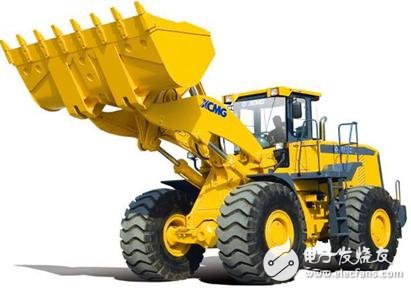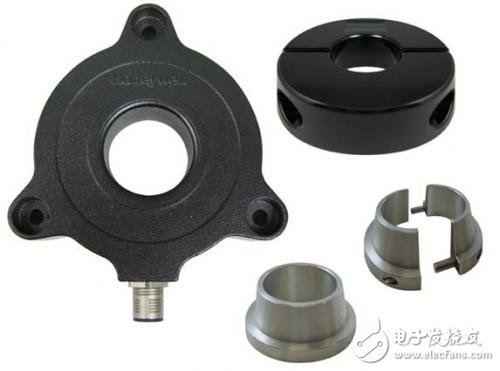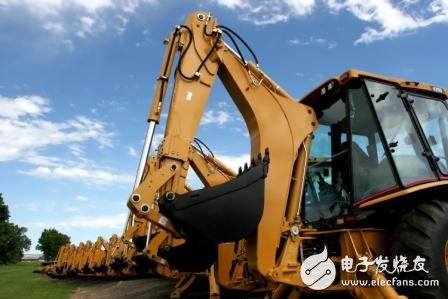Sensing technology is one of the biggest factors affecting the cost and safety of mobile hydraulic systems. Proper sensing technology makes the system easier to operate, safer and faster to use. Heavy-duty construction machinery such as wheeled front-end loaders, excavators and bulldozers use sensing devices to monitor and control oil temperature, pressure, liquid level, wheel speed and other key measurement data to improve operator safety and reduce equipment damage and reduce Downtime.

Hydraulic systems such as hydraulic motors, pumps, reservoirs, valves and cylinders use liquid hydraulics to drive mechanical loads. The hydraulic system of the front loader (shown in Figure 1) uses a variety of sensors such as temperature, speed, angle, position and pressure to make the vehicle more stable, productive and efficient.
For example, a temperature sensor measures the temperature of the oil in the hydraulic system. The pump draws oil from the reservoir and supplies it to the hydraulic cylinder connected to the workload under pressure. When the operator presses the control device in the cab, the cylinder extends or retracts. As the equipment continues to retract and extend, heat is generated in the hydraulic fluid and may exceed the maximum operating temperature range of the system. When the hydraulic fluid reaches the predetermined temperature, the sensor will send a signal to open the cooling fan on the oil cooler to keep the system temperature within the allowable range. This will prevent the system from overheating or malfunctioning.
The front-end loaders use a variety of hydraulic systems that apply temperature, speed, angle, temperature and pressure to make the vehicle safer and more efficient.
For many applications, the temperature sensor platform is the solution for the hydraulic system to maintain economies of scale. These sensor platforms, such as the sensor platform offered by Honeywell Sensing and Control, provide construction equipment manufacturers and their motor, pump, and cylinder suppliers with the ability to customize temperature sensors for their applications. The platform's modular design offers a wide range of probe lengths, materials, connectors, housings and output types.
Size and weight are often important considerations for space-constrained applications. Honeywell's sensor platform devices are compact and rugged, reducing the overall size of the system without compromising performance. In addition, these sensors are available in a variety of housing materials to ensure compatibility with virtually any type of hydraulic fluid.
In addition, the liquid storage tank in the system can use infrared sensors to measure the level of the oil level. This feature is also achieved with a mechanical float switch, but the non-contact infrared sensor has higher accuracy and longer life.
Speed ​​sensors are widely used in mobile hydraulic systems for heavy duty construction vehicles, such as controlling pump speed and detecting wheel speed and direction. In many cases, the wheels of large off-highway motor vehicles can be driven by hydraulic hub motors. The pump is driven by a diesel engine and delivers hydraulic fluid to the motor.
In space-constrained hydraulic pump applications, sensor manufacturers such as Honeywell Sensing and Control can design a custom speed and temperature integrated sensor to monitor pump speed and hydraulic fluid temperature. The integrated sensor also provides diagnostic information for wiring faults such as short circuits, improving device safety and efficiency.
In hydraulic hub motor applications, sensors are used to detect speed and direction. In some cases, sensor manufacturers will offer integrated sensing solutions that combine melting speed and direction detection. The main feature of the Hall-effect magnetic sensor used in this type of application is jitter protection, which eliminates false signals or pulses. This characteristic is especially important for mobile hydraulic systems when the motor is idling.
For example, if the vehicle starts to move forward or backward at a certain angle of inclination, the electronic control system needs to know the specific tilt angle of the vehicle in order to compensate for the jitter and stabilize the vehicle. The sensor takes information about whether the wheel is moving, moving in which direction, and then transmits the data to an electronic control module that provides feedback to the hydraulic system to compensate for jitter.

Image: Honeywell RTY Series Hall Effect Position Sensor
Honeywell's RTY Series Hall-Effect Rotary Position Sensors are housed in an IP67 sealed enclosure that operates in harsh transportation environments and is suitable for measuring the position of the swashplate within the hydraulic motor.
The angle sensor monitors the position of the swashplate within the hydraulic motor. The swash plate controls the speed of the wheel by controlling the amount of hydraulic fluid pumped by the motor. Equipment manufacturers can choose non-contact MR sensors or Hall effect sensors depending on the application.
Non-contact MR sensors typically have a long life, high accuracy, and can withstand high temperatures, vibrations, and harsh environmental conditions, but are expensive compared to low cost, good performance Hall effect sensors. a lot of. The sensor type can be selected based on the technical and cost requirements of the vehicle.
Many types of construction equipment, especially those with multiple legs that prevent rollover (see Figure 2), have smart position sensors. Some types of construction equipment may use up to five smart position sensors per unit. One sensor is mounted on each leg, and one sensor is mounted on each backhoe, front loader, and bucket boom.

Honeywell's smart position sensors use non-contact magnetoresistive technology to accurately detect position information in harsh transportation applications. They can be applied to excavators to help keep the vehicle stable and ensure operator safety.
These sensors control the angle of the extended hydraulic cylinders (legs), prevent the excavator from tipping over or damaging, and ensure the accuracy of the excavation. Accuracy is especially critical when operators are digging within one inch of the power line. The operator needs to know the position and depth of the ditch very accurately.
By accurately measuring the position of the bucket, for example, the operator can accurately dig a trench without checking the depth of the trench and re-excavating. This means that less skilled operators can operate, complete tasks faster, and increase efficiency. At the same time, it means that the equipment wears less (the resulting downtime and cost reduction), less labor, less emissions, and more intelligent work. In addition, automatic digging can be added to increase productivity, reduce operator workload, and reduce fatigue.
There are several key parameters to be aware of when selecting a position sensor for a cylinder control application, including accuracy, seal, and output type. The degree of angle to be measured should also be taken into account. For example, if the boom usually has only 90° of motion, there is no need to choose a sensor that can measure 180°. The sensor's output range is fixed, and a wider range of motion results in a slight loss in resolution, accuracy, and repeatability.
In addition, manufacturers can also consider the use of non-contact sensors to eliminate the more vulnerable link mechanism, the damage of the link mechanism usually leads to on-site shutdown, replacement parts. Although the non-contact sensor is more expensive, it eliminates the cost of the linkage and associated assembly, thereby reducing the overall installation cost of the vehicle.
The pressure sensor indirectly measures the amount of liquid in the tank to ensure that a specified amount of oil, fuel and hydraulic fluid are available for safe operation. For example, when used in a hydraulic tank, the pressure sensor or switch can determine if there is a leak by the amount of pressure on the line. When combined with smart position sensors to measure cylinder pressure for cylinder control, these sensors ensure a more stable and efficient vehicle.
By using sensor technology to optimize mobile hydraulic systems, heavy construction machinery manufacturers and subcontractors can address multiple critical on-site construction issues such as operator fatigue and skill issues, as well as safety, job accuracy, equipment wear, Downtime, reduced emissions, and improved combustion efficiency.
Mobile hydraulic systems use a wide range of sensors and technologies, and vehicle manufacturers should choose a suitable sensor manufacturer to help them solve their technical problems. Honeywell Sensing & Control's comprehensive range of sensor products, as well as extensive industry experience and technical know-how, provide superior standard equipment and custom equipment, and help you choose the right technology to optimize performance, making it ideal for vehicle manufacturers. selected.
HYAKKI Vape,HYAKKI Vape 2500Puff,Hyakki Fragrant Mango,HYAKKI Disposable Vape,HYAKKI Vape Kit,HYAKKI Vape Pod
Tsvape E-cigarette Supplier Wholesale/OEM/ODM , https://www.tsvaping.com